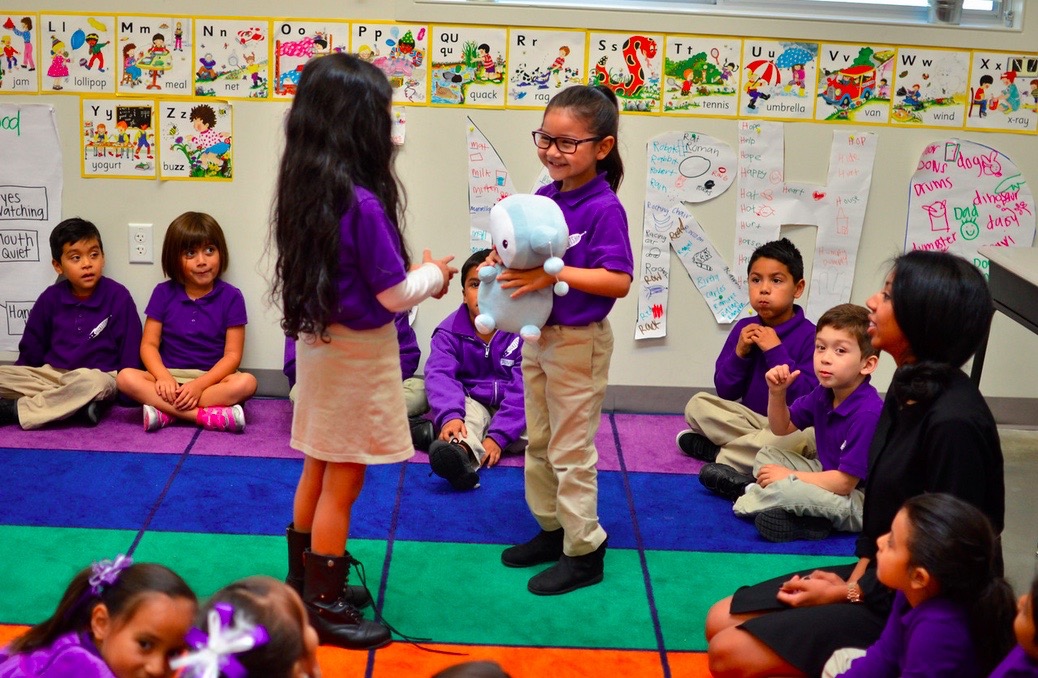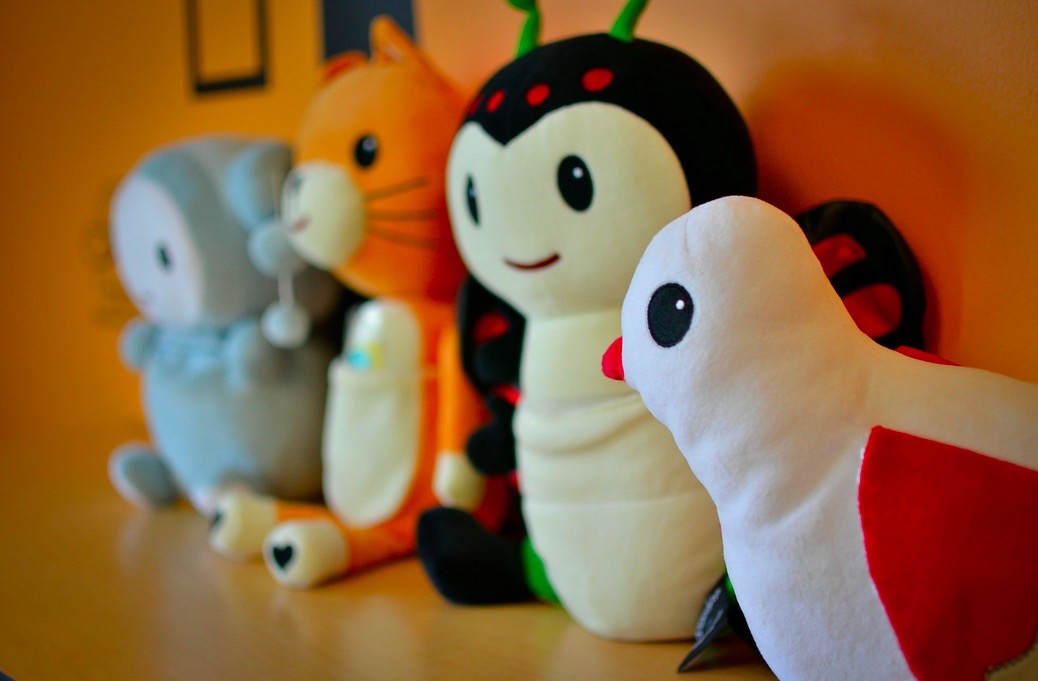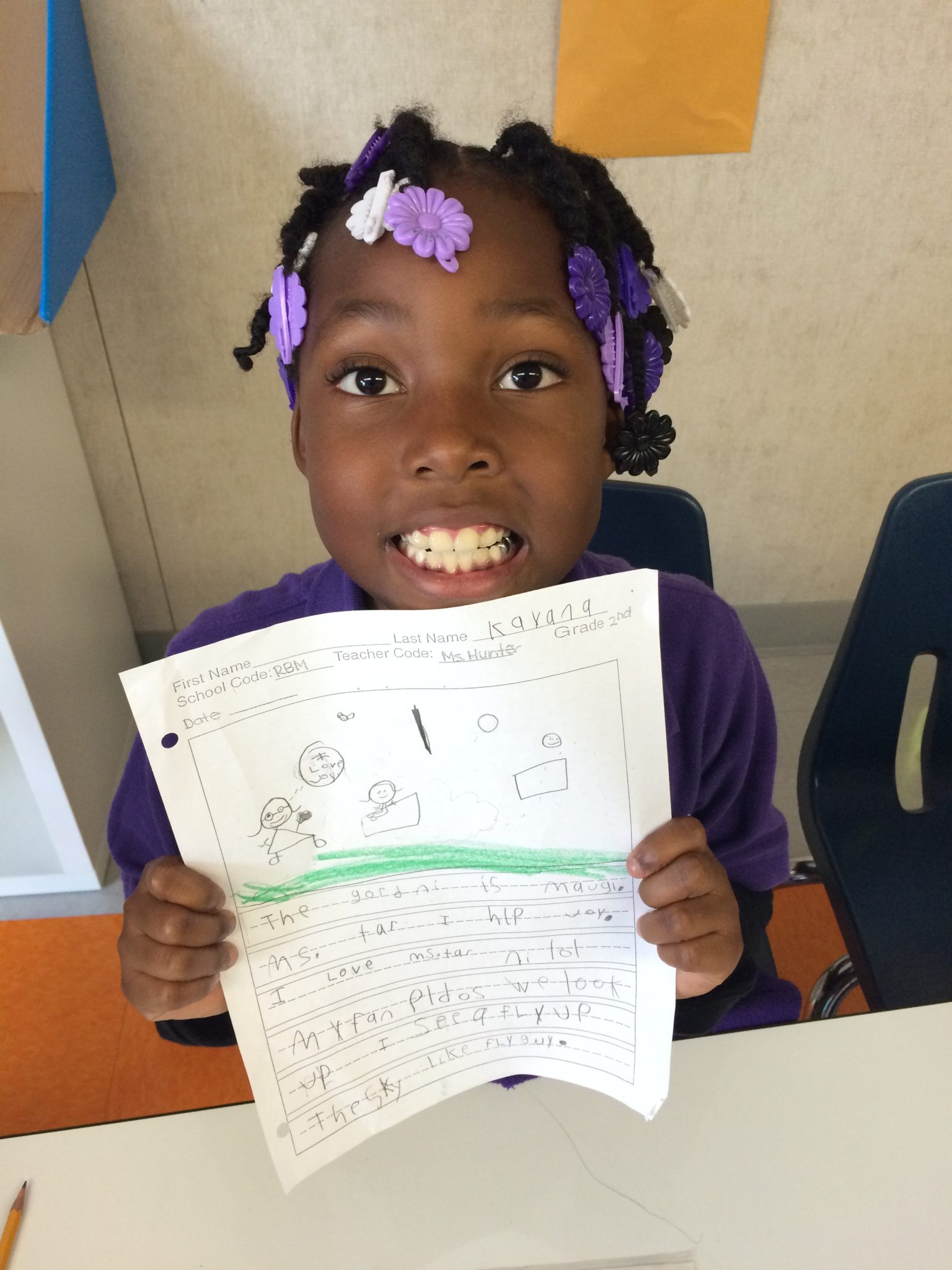
Building Team Kayana
by Divya Budhraja, Lead Integrated Special Education Teacher, Rocketship Brilliant Minds
She was concerned. But she was hopeful.
When we met Kayana on her first day of school as a Rocketeer, we too were hopeful. We knew, though, that for Kayana to be successful at school we would have to create a positive learning environment both physically and intellectually in which she could thrive. By focusing on a safe classroom, a network of collaboration, and individualized supports, we are able to create an environment where our students – including Kayana – are able to make tremendous growth.
A Safe Classroom

Social-emotional curriculum, such as Kimochis, can support students in developing an emotional vocabulary.
We ask students to take risks every day in their learning. For Kayana, this meant decoding, blending, rhyming, counting and adding all while learning her new school’s routines and expectations. This would be a tall order for any person to manage, let alone a student who had never been in a school setting before! In order for her to take this risk, we had to create a safe environment. We had to show Kayana that even if she made a mistake, she would continue to be supported and encouraged. One way we ensure that students feel safe in their classroom is through a community meeting each morning. Each day, as the students enter their classroom, they eat breakfast, turn in homework and then congregate at the carpet for their community meeting. Though we would like our students to come to our classrooms knowing how to interact with others appropriately and respectfully, the reality is that many of our students, like Kayana, need support in doing so. Our teachers use this crucial time to expose our students to respectful habits of discussion and the lessons learned from social-emotional curriculum such as The Ruler Approach and Kimochis. By identifying how they’re feeling, how to communicate their feelings to others, and how to work toward conflict resolution independently and productively, these students have developed a skill set that is enhanced through daily practice and repetition. This way, when a conflict presents itself in the classroom, students are much more respectful, productive and safe with one another.
A Network of Collaboration
Just as adults build professional and personal networks of support, our students are encouraged to build networks of support with one another. Kayana needed to know that she had a team of cheerleaders who were not only her biggest fans, but who were consistent and aligned in their expectations. Teachers can help create this network in many different ways. One thing in particular that has proven to be most effective in developing a network of collaboration is building a partnership with families. Research shows that when schools and families work together, children tend to do better in school, stay in school longer and enjoy being at school. For Kayana, this meant developing a common language between home and school so we could show –and not just tell – Kayana that we were all on her team. Kayana’s mom visited Rocketship and observed Kayana in class. She then duplicated procedures and expectations at home, modeling and rehearsing daily with Kayana. This transparent partnership amongst Team Kayana resulted in her internalizing routines and feeling more safe at school since she knew what to expect and had a safe space to practice.
Individual Supports
One of the most powerful gifts we can give our students is providing them with the supports they need in order to access the content in the classroom. For Kayana, this meant her team learning from her behaviors and developing individualized supports that met her where she was. The reality is that students need explicit teaching of expected behaviors, and some students require additional supports to feel safe at school. Some ideas include social stories and visual supports as reminders of expected behaviors in the classroom. To build some of these supports in your own classroom, check out these great websites:
- Behavior Doctor This site provides the research and the resources! Here, you can find everything from calming videos for students to concrete deescalation resources to ideas for academic supports. Happy resource shopping!
- PBIS World This site allows you to select a specific behavior (like anxiety) and provides specific examples of what this behavior might look like in schools. The site then customizes interventions for each behavior selected. One of the best parts about this site is that you’re able to view interventions for students by level of severity.
- File Folder Fun Sometimes, a kiddo just needs some file folder tasks. This site provides free downloads of dozens of tasks that can be matched to individual student preferences and skills. This would be a great place to start when building in individualized academic supports for a student!
In her first month at Brilliant Minds, Kayana ran out of her classroom multiple times a day. She wasn’t able to identify letter sounds and didn’t understand the concept of addition. With the support of Team Kayana who worked effortlessly toward her success and safety, she is now engaging in learning and participating in all classroom activities. Over the past year, Kayana has made two years of academic growth in math. She is able to decode words independently and has jumped three reading levels. She can add and subtract two-digit numbers. She’s able to write a paragraph independently. But, most importantly, she loves being at school because she knows that – even when she makes a mistake or feels nervous about a task – Team Kayana will always be in her corner.
How do you support all students in taking risks? Share with us! ➟ @RocketshipEd
Divya is an Integrated Special Education Teacher at Rocketship Brilliant Minds. Before joining the Rocketship team, she taught in Los Angeles and then Cupertino. When Divya isn’t hanging out with her students, she enjoys reading, running and cooking. On the weekends, you’ll find Divya working to accomplish her goal to hike everywhere possible in the Bay Area.
Published on October 22, 2015
Read more stories about: Most Popular Stories, Teacher Experience.


